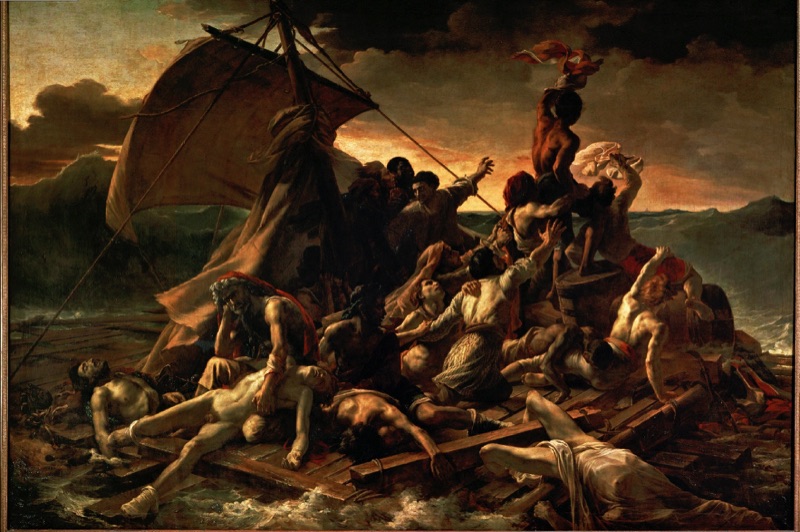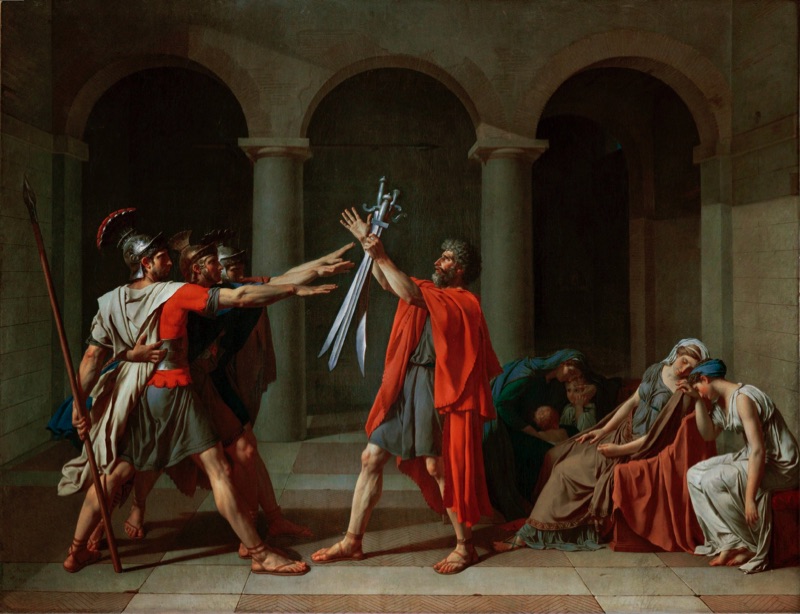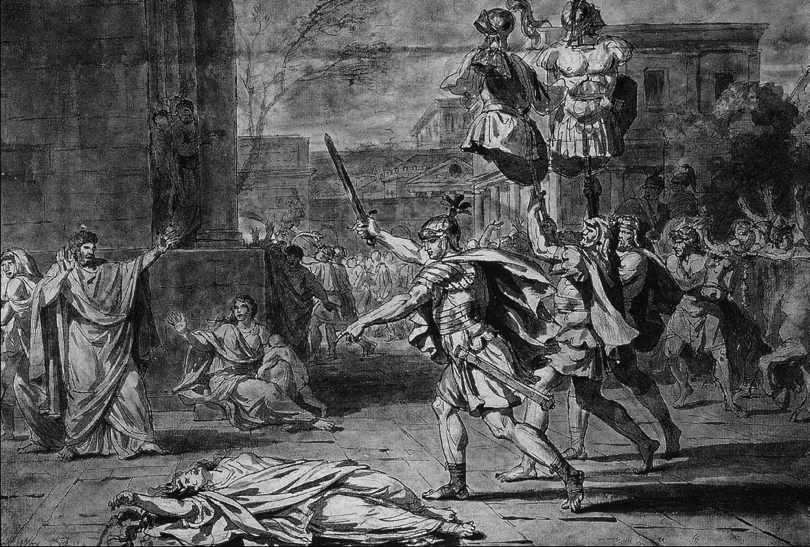How to make a history painting
pre-class prep: read selections from Lorenz Eitner, Gericault's Raft of the Medusa (PDF)
here are the images that go with Eitner (PDF)
discussion questions: There are no discussion questions for this topic.
people, terms, and concepts: history painting, composition
key points:
Using David's Oath of the Horatii and Géricault's Raft of the Medusa as examples, this topic breaks down the artistic process of creating a history painting so you can better analyze works of art by recognizing that every aspect of the work was a deliberate choice, either by the artist or by the patron, and that different choices at any of these stages would have led to a different message or meaning.
• choice of story or subject -- Why did David’s patron (the Count d’Angivillers, Louis XIV’s Minister of Buildings) choose the story of the Horatii and Curiatii? Why might Géricault have chosen to depict the story of the Raft? (There are at least two potential reasons ...)
• choice of narrative moment -- What narrative moments did David consider for the story of the Horatii and Curiatii? What narrative moments did Géricault consider for the story of the Raft? Why did each choose the moment he did (and reject the other moments they considered)?
• choice of composition -- How do David’s compositional choices help the viewer see the 'heroic resolve' of the Horatii? What compositional choices did Géricault consider, and how do his final choices help convey the emotional drama of the story of the Raft?
• choice of characters and their body language -- how does David use a contrast in body language between the men and women to support his intended message? How does Géricault pose his figures to show the full emotional range of their ordeal?
• choice of color, lighting, etc. -- Why does David use clear, even lighting while Géricault chooses strong contrasts of light and dark? Why does David choose basic and evenly-distributed reds, yellow-ochres, and blues while Géricault chooses dark earth colors and a contrast between warm yellow/orange hues and cold green/gray hues?
Notice how many choices the artist (and patron) have to make, and how each of these choices help to express the message of the work. Your museum papers should similarly try to discover and analyze all of the significant choices made by the artist (and/or patron), and relate those choices to the work's expressive intent/message.
Géricault, The Raft of the Medusa, 1819 (French Romanticism)

Jacques-Louis David, The Oath of the Horatii, 1785


Jacques-Louis David, Horatius, Victorious, Re-Enters Rome (study for the Oath), 1784

Géricault, Rescue of the Survivors (study for the Raft), 1817-18 (French Romanticism)
